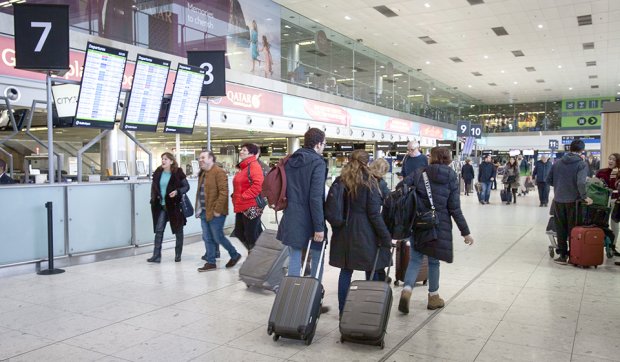Dublin Airport Among Europe’s Biggest Growers Since 2012

Passenger traffic at Dublin Airport has grown by almost 55% since 2012 – a period when the number of European airports handling more than 25 million passengers jumped from 14 to 24, according to new annual figures from ACI Europe.
2017 was “a vintage year” for European air passenger traffic, with traffic across the European network up 8.5% - the fastest passenger growth in thirteen years, the organisation said.
ACI Europe said the growth since 2012 in the number of airports in the over-25 million passenger category indicated the increasing competition amongst larger airports and hubs.
“More generally, the impressive performance of a number of individual airports over the same period is also testimony of widespread airport competition.”
It said biggest growers since 2012 included Keflavik (+267.7%), Istanbul-Sabiha Gocken (+105.2%), Split (+98.1%), Sofia (+87.1%), Luxembourg (+87%), Eindhoven (+89.9%), Berlin SXF (+81.3%), Oporto (+78.3%), Lisbon (+74.3%), Athens (+67.9%), Malta (+65.1%), Warsaw WAW (+64.3%), Dublin (+54.9%), London-Stansted (+48.3%), Naples (+47.8%), Birmingham (+45.5%), Bordeaux (+40.5%), Barcelona (+34.5%) and Amsterdam-Schiphol (+34.3%).
ACI Europe Director General Olivier Jankovec said 2017 was “the best year for European airports since 2004, when air traffic was boosted by the accession of 10 countries to the EU – the single largest expansion of the bloc. That parallel is quite something when you consider the current climate includes Brexit and all its uncertainties.”
He added “This performance comes on top of several years of dynamic growth and shows that demand for air transport keeps outperforming the economy and defying geopolitical risks – for now.”
“It is quite impressive to see that even in the more mature EU market, passenger traffic since 2012 has increased by close to 30%. Such significant growth is putting much pressure on airport facilities and staff with more and more airports now reaching their capacity limits - especially during peak hours.”
The biggest increases were at non-EU airports and in the eastern and southern parts of the EU.
EU airports saw passenger traffic increasing by 7.7%, a further improvement on the 6.7% improvement seen in 2016. Airports in Latvia, Estonia, Poland, the Czech Republic, Slovakia, Hungary, Croatia, Slovenia, Romania, Bulgaria, Cyprus, Malta and Portugal recorded double digit growth.
Passenger traffic at airports outside the EU increased by an average of 11.4% - compared to a 0.9% decrease in 2016. Russian and Turkish airports enjoyed “a bounce back”, while airports in Georgia, Ukraine, Moldova and Iceland grew by more than 20% on average.
Looking ahead, Mr Jankovec said: “This might be as good as it gets and while we anticipate continued growth in the coming months, it will most certainly come at a slower pace. The good news is that the European economy and the Eurozone in particular are set for further expansion, with economic sentiment now close to a 17-year high.”
“But on the flip side, rising oil prices are affecting airlines and consolidation is now placing more market share with a handful of powerful airline groups.”
“Couple that with the fast-approaching Brexit deadline on the horizon and it’s not hard to see why Europe’s airports can expect the temperature to rise, as airlines get even choosier about where they maintain existing capacity or open new routes.”
Among Europe’s major airports, the highest 2017 growth was seen at Moscow SVO (+17.8%), Manchester (+8.6%), Amsterdam (+7.7%), Moscow DME (+7.6%) and Barcelona (+7.1%).
Among European Group 2 airports, the highest growth was seen at Antalya (+38.0%), St Petersburg and Warsaw WAW (+22.7%), Ankara (+20.6%), Lisbon (+18.8%) and Prague (+17.9%).


